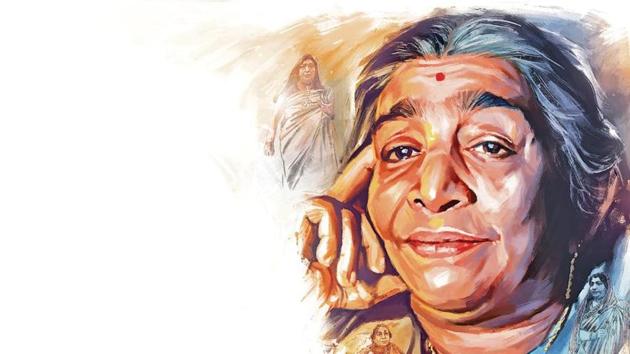Sarojini Naidu: Poetess, icon of freedom quest
An acclaimed poetess, this freedom fighter played several key roles. She was the first Indian woman to hold the presidential post of the National Congress in pre-independence era and free India’s first woman governor.
Born in Hyderabad on February 13, 1879 to the scientist, philosopher and co-founder of the Nizam College Aghornath Chattopadhyaya and Barada Sundari Devi. A brilliant student, Sarojini Chattopadhyay received accolades galore when she was admitted to the Madras University aged just 12.

Childhood, Personal life
After passing matriculation, she took a break for four years and qualified for a scholarship to study abroad. In 1895, she joined King’s College, London and later Girton College in Cambridge. During this period, she developed a passion for reading and writing poems. She also achieved proficiency in several languages including Urdu, Persian and Telugu.
While in college, Sarojini Chattopadhyay met Govindarajulu Naidu. After she completed studies at the age 19, the duo got married in 1898 and later had four children.
Independence Movement
Sarojini Naidu actively participated in the movement for freedom which she joined after the partition of Bengal in 1905. During 1915-1918, she crisscrossed the country addressing gatherings on themes such as nationalism, social welfare, women empowerment and emancipation. She was closely associated with all the leading lights of the freedom movement including Gopal Krishna Gokhale, Rabindranath Tagore, Muhammad Ali Jinnah, Annie Besant, C. P. Ramaswami Iyer, Mahatma Gandhi and Jawaharlal Nehru.
In 1925, she was appointed the President of the National Congress, making her the first Indian woman and second one overall (after Annie Besant) to occupy the post. In 1930, she participated in the Salt Satyagraha, presided over the East African Indian Congress and, in 1931, attended the Second Round Table summit along with Gandhiji and Madan Mohan Malaviya.
The British colonial authorities punished Naidu by sentencing her to prison stints in 1930, 1932, and 1942-43. In 1942, she was arrested along with Gandhiji for her involvement in the Quit India movement and was jailed for almost two years. She led by example and inspired a large number of women to come forward and take part in the freedom struggle.
After India achieved independence in 1947, Naidu became the first woman governor when she was given charge of the United Provinces of Agra and Awadh (which was later renamed Uttar Pradesh) and held the post till 1949. Two years after the nation was freed, she passed away on March 2, 1949, following a heart attack.
Extraordinary poetess
As a prolific poet, the first volume of her poems titled The Golden Threshold, was published in 1905, that was followed by the collections titled The Bird of Time and The Broken Wing.
Other works of poetry by Naidu included The Feather of The Dawn, The Wizard Mask and A Treasury of Poems, while The Magic Tree and The Gift of India. She had also authored a biography of Muhammad Ali Jinnah titled The Ambassador of Hindu-Muslim Unity. It was by dint of the beautiful and rhythmic poems that Naidu was popularly referred to as Bharat Kokila or the Nightingale of India.
As a teenager, she went to London for studies and met Nobel laureates Arthur Simon and Edmond Gausse who advised her to focus on Indian themes. She expressed contemporary life in India through verses.
The British government conferred on her the Kaisar-i-Hind medal, an honour conferred for contribution to public interest. She received this for her contributions in fighting the plague epidemic.
In 2018, she was among the 150 Leading Women featured by the University of London to mark the 150 years since women gained access to higher education in the UK in 1868.
She wrote verses for children as well as grown-ups and her themes ranged from nature and its beauty, patriotism, love and death. Even at a time when religious tension ran high, she penned down a poem that praised Muslim religious figures. Her poetry reflected her deepest emotions and an outlook that was aimed at transcending social divisions such as caste, class and religion.
Sources: thefamouspeople.com, Britannica



